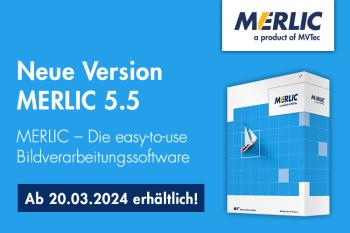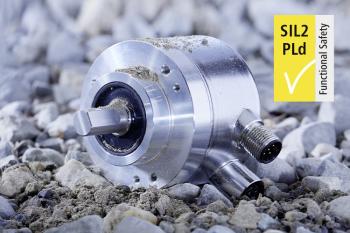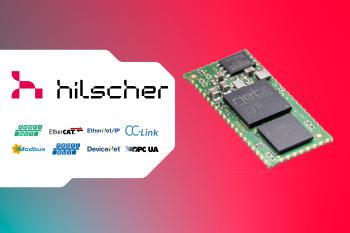Everything is illuminated
Advantages of In-line Illumination
Illumination is one of the most important aspects of any imaging system, and can often be the difference between a good imaging system and a great one. Unfortunately, there is no such thing as a catch-all solution for illumination, as it will be vastly different from application to application.
The best way to decide what type of lighting is needed isto analyze the object's inherent optical properties in connection with the goal of the imaging system. That analysis can quickly become complex and involved. Often, it is better to look at the system as a whole and determine if there are any constraints that would immediately eliminate a potential illumination option. Often, limited space narrows the potential illumination options to a select few - one of which is in-line illumination.
What is In-line Illumination?
In-line illumination is a unique style of lighting that incorporates the illumination into the optical train of the machine vision lens, usually by means of a fiber optic light guide or LED light source and some sort of beam splitting optic. Although in-line illumination is not as bulky as its diffuse axial counterpart, and may be easier to integrate into a system, there are important differences a system designer must consider. In-line illumination is much more directional, which, due to the nature of chief rays parallel to the optical axis in object space, is one of the reasons that in-line illumination is widely incorporated with telecentric lenses. In comparison, diffuse axial lighting will project the illumination at a multitude of different angles, displaying different properties on the object and image planes.
Vastly different results will also come from comparing in-line illumination to brightfield illumination. Figure 1 shows a chrome on glass, positive USAF 1951 contrast target illuminated both with brightfield illumination and with in-line illumination.
he most immediate difference between the two types of illumination is the complete contrast reversal between the two images. Additionally, the defects in the target are more readily apparent in the brightfield image, which, depending upon the application, can be either a positive or a negative effect. Interestingly, the highly reflective nature of the target yields about 10% better contrast for the in-line image when compared to the brightfield image, explained further below.
When to Use In-line Illumination
When considering using in-line illumination, it is important to understand exactly where it is applicable and where it is not. In-line illumination is ideal for the inspection of specular or semi-specular objects, such as semiconductor wafers or CCDs, due to the nature of the rays on the illumination path. Using two different telecentric lenses, one with in-line illumination and one without, images of the same CCD demonstrate the differences between brightfield illumination (using a ring light) and in-line illumination. The images are shown in Figure 2.
In-line illumination would be a better choice to inspect the wires along the edge of the CCD due to the higher, more even contrast between the wires and the rest of the CCD. As shown in Figure 3, the reason that the wires in Figure 2 appear bright using brightfield illumination and dark using in-line illumination is due to the ray paths of the lighting. With brightfield illumination, the rays are scattered into the lens, and with in-line illumination, the rays are scattered away from the lens.
With brightfield illumination, the rays originating from the ring light are reflected by the object into the lens. The reflections will vary based on the angle of the individual sources in the ring light as well as the angle of the wires themselves with respect to the CCD surface and the solder material at the tips, which is why the reflections have non-uniform pixel values along the length of the wire. Using in-line illumination, all of the rays are reflected by the object and scattered away from the lens such that none of the light that hits the wires is reflected back into the lens and onto the sensor. The more even contrast of the background, along with the stronger contrast of the wires makes in-line illumination a better choice for the inspection of the wires than brightfield illumination.
If the CCD cover glass were to be inspected for digs or chips, in-line illumination would also be the more advantageous choice since the overall image has a much more even contrast. The dark chips shown using in-line illumination (a result of the light being scattered as shown in Figure 3) would appear at a much higher contrast to the busy CCD background than the chips shown in the high contrast image formed using a brightfield system, as demonstrated in figure 2.
When not to use In-line Illumination
Due to its multiple advantages, it is often misconstrued that, in a space constrained system, in-line illumination is always the best choice. Unfortunately, it is not the best solution for objects that are optically diffuse or for objects requiring a large field of view. When used with diffuse objects, in-line illumination produces a hotspot on the image caused by the Lambertian (a nearly constant bidirectional reflectance distribution function) tendencies of the object, which is detrimental to any inspection system. Figure 4 below shows an image of a diffuse object of wooden material both with and without in-line illumination.
When the primarily Lambertian object is in-line illuminated, the image has a well-defined hotspot in the center of the field of view. This hotspot effectively washes out the desired contrast, yielding a contrast of about 70% for the brightfield image, and about 8% for the in-line illuminated object, with both contrast values taken at the center of the image.
There are, of course, other situations where in-line illumination is not the ideal option. When a large field of view is required, the étendue of the illumination system becomes a problem, in that spreading out the flux of the light over a large field inherently leads to a much less dense bundle of photons, and therefore has a negative impact on the throughput of the system as a whole. Imperfect light sources also play a much larger role to the detriment of inline illumination systems with large fields of view, as the small imperfections are bolstered over the large projection in the object plane.
Conclusion
It is always important to consider all options when solving any illumination problem, and to keep in mind that no single solution solves every problem. But in-line illumination fills a unique niche of illumination solutions: providing compact, directed and controlled illumination suitable for small field of view, reflective objects. For many applications, the even contrast provided by in-line illumination provides a clear performance advantage over other options.






